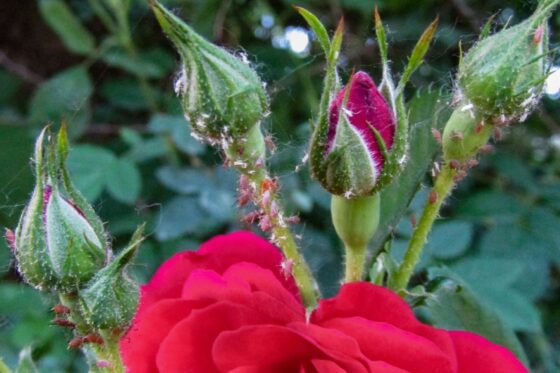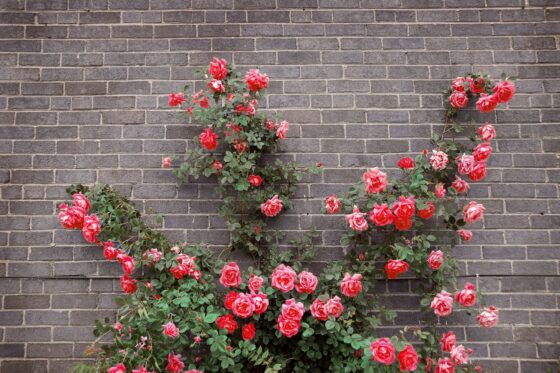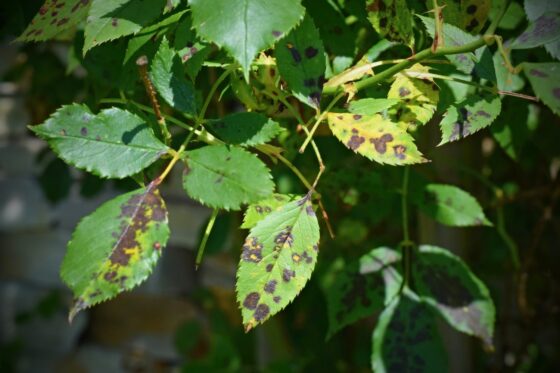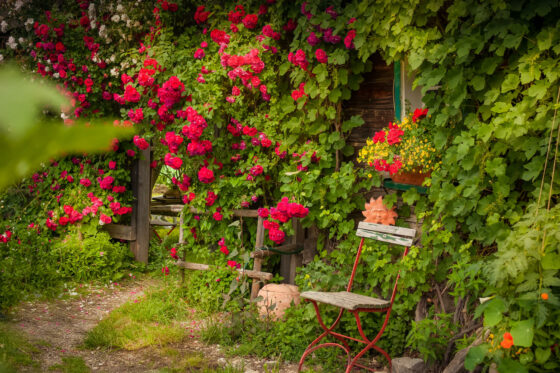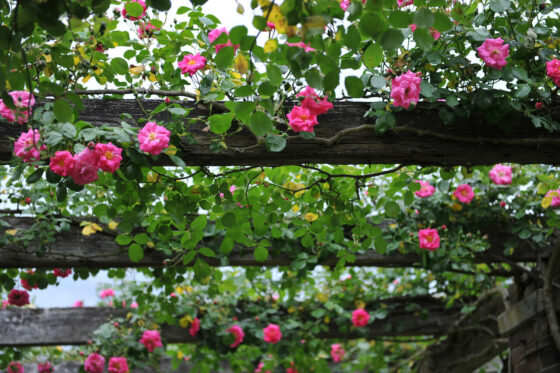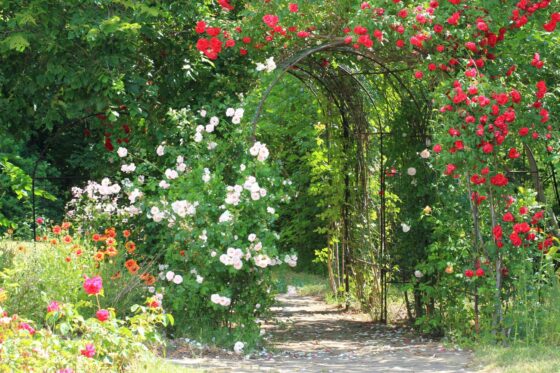Planting roses: expert tips on location & planting time
There are a few things to consider when planting roses. Here you will learn everything from the appropriate location to the right time to plant roses in the garden.
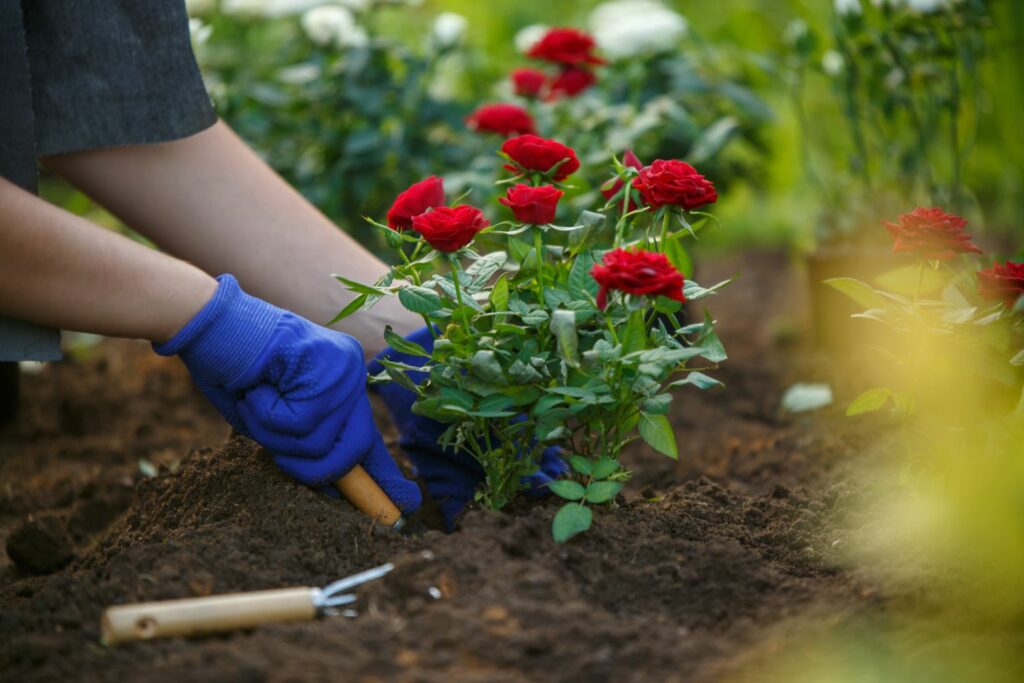
The rose (Rosa) is not called the “queen of flowers” for nothing. It is one of the most beautiful flowering shrubs, especially since it is usually particularly accentuated when planted in the garden. There is a large selection of different rose varieties: whether red or white, climbing roses or bedding roses – you will always find them in larger garden centres or tree nurseries. To ensure that your chosen garden rose also thrives magnificently, we explain to you in this article which aspects you should pay attention to when planting.
Together with other genera – such as the blackberry (Rubus) or the apple (Malus) – the rose forms the large rose family (Rosaceae). This affiliation results in special requirements for the optimal location. Below we go into more detail about the correct planting.
Contents
The perfect location for your roses
Roses prefer open, airy areas with plenty of sun and heat. Strong temperature fluctuations between day and night, especially in the early spring, can pose a threat. Therefore, it is best to choose a protected place for your precious plant. However, the plant should not be placed too close against a house wall because the rose does not tolerate heat accumulation too well. A sufficient distance should also be kept from other plants.
Besides the right location, the best garden soil is also good enough for roses. This should be deep, loose and rich in nutrients, and the pH value should be between 6.5 and 7.0 in the neutral to slightly acidic range. After a few years, however, the soil can become “tired of roses” – before planting a new rose culture you should therefore use the location for other ornamental plants that do not belong to the rose family.

Expert tip: Some rose experts recommend intercropping student flowers (Tagetes patula) to avoid harmful nematode species in the soil, as these are blamed in part for the occurrence of soil fatigue. However, the because of this phenomenon has not yet been completely clarified.
When to plant roses?
You can basically buy container plants all year around, even in the summer. However, it is best to plant roses in the autumn (October/November) because then they have enough time over the winter to take root. In harsher locations, roses can still be planted in the spring, but then need to be especially well watered with the onset of budbreak.
Planting roses in the bed
Before planting, you should loosen the soil and if necessary, improve it with a bucket of mature compost. You should place roses without a root ball in water for a few hours (up to 24 hours for spring planting) before planting. Container roses also grow better when the pot ball is immersed in water before planting until it sinks and no more air bubbles rise. After watering, you should remove any damaged roots smoothly and shorten all others to about 30 cm.
Dig the planting hole about twice the size of the root system. Then insert the rose so that the grafting point after insertion is about three finger widths below the surface. Then fill the planting hole with a mixture of garden soil and compost. For If necessary, you can also add some organic slow-release fertiliser. Lightly pat down the soil. Finally, water the newly inserted plant well because only this process causes the soil to settle and encloses the roots. Finally, heap the plant about 20 cm high to protect it from drying out due to wind and sun.

Summary of planting roses:
- Loosen soil
- Immerse pot ball in water
- Prune roots a little
- Dig the planting hole about twice the size of the plant root system
- Do not insert rose too deep
- Fill with soil and compost
- Lightly tread the soil and water well
- Mound about 20 cm high
Planting roses in a pot
If you do not have your own garden, you can plant roses in a pot or container. Since roses take root very deeply, you should choose a planter of sufficient size. Every few years, the soil must then be replaced with fresh substrate so that the plant has enough nutrients again. Special soil for roses is offered in stores, but you can simply mix garden, compost and potting soil in equal parts. As a location, a sunny, airy place on the balcony or terrace is wonderful.
Various varieties of dwarf roses, bedding roses or noble roses with a compact growth are suitable for pot culture. However, when buying make sure that the plant material is healthy and free of pests. Potted roses are generally more susceptible to disease and also require more regular watering than outdoor plants. More information about potted roses can also be found here in our special article.
Expert tip: Potted roses do not tolerate waterlogging well at all. Therefore, it is best to apply a drainage layer of gravel or expanded clay so that excess irrigation water can run off.

Caring for roses after planting
If you have already ensured good starting conditions when planting, the amount of care required for roses will be limited. In the spring (March/April), you should perform maintenance pruning and basic fertilisation. For example, our Plantura Rose Food with long-term effects reliably supplies your roses with all the key nutrients. During long periods of drought, you should also ensure adequate watering. In areas with harsher climates, it must also be remembered that some varieties of roses have limited winter hardiness. Therefore, special winter protection measures may be necessary to ensure that your rose survives the cold months well.
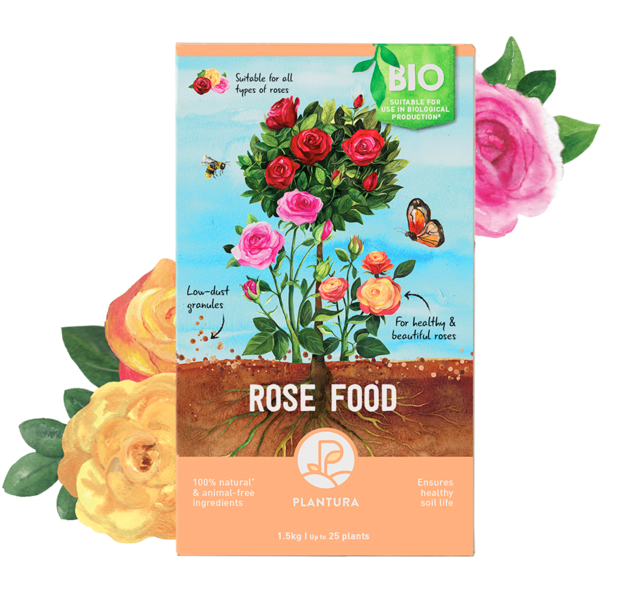
- For beautifully flowering roses in pots & flower beds
- Prevents common rose diseases & ensures healthy growth
- Long-lasting fertiliser that is free from animal products - child & pet friendly
In this special article you will find detailed information about rose care. In addition, more detailed information on watering roses and pruning your roses can be found in the corresponding articles on the respective topic.



















